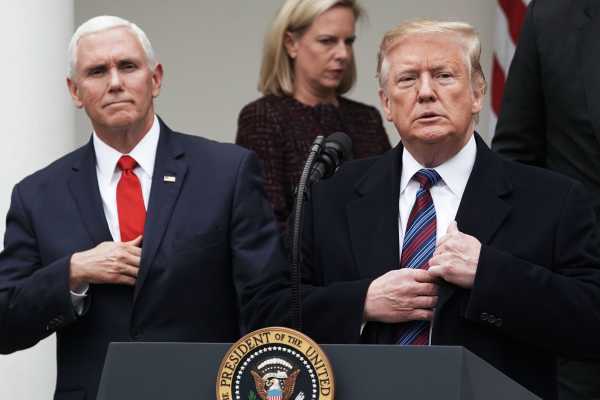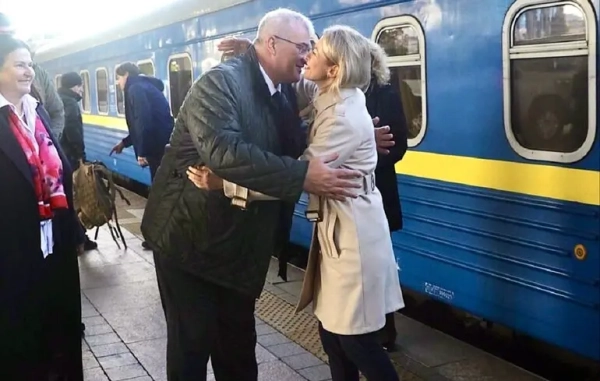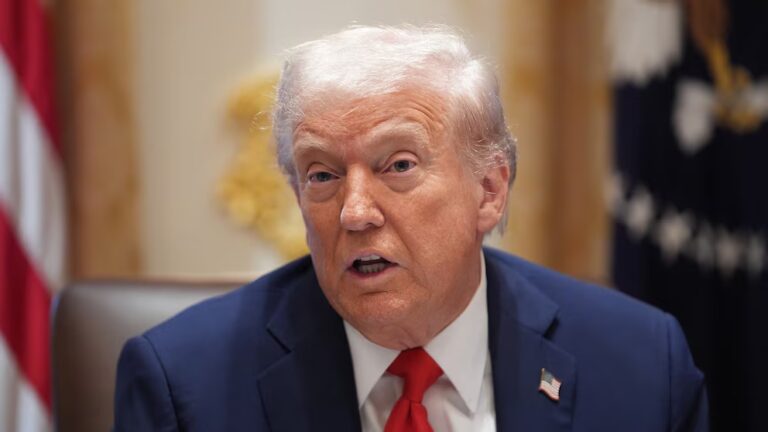
Even as President Donald Trump has continued his temper tantrum over the border wall — which will now include a primetime television statement on Tuesday, a border trip Thursday, and possibly a declaration of national emergency — his administration has actually extended an offer to Congress to end the government shutdown.
The question is how seriously anyone, including the administration itself, takes that offer.
As the government shutdown enters its third week, and 800,000 federal employees face their first missed paycheck on Friday, the Trump White House is either divided or trying to have it both ways.
On one hand, unnamed Trump allies are leaking aggressively to White House reporters about how the president wants to go “all out” and unilaterally declare a state of emergency in hopes of unlocking some money that can be used to start building steel barriers at the US-Mexico border.
But on the other hand, a group of senior officials, led by Vice President Mike Pence, is stressing to reporters that they are trying to negotiate with Congress after a series of discussions over the weekend, and that the point of Trump’s efforts is to get Democrats to come to the negotiating table.
“We really believe that we can address these issues now,” Pence told reporters Monday. “We stand ready to sit down with the Democratic leadership.” (Democrats have consistently said they will not engage in any negotiation until the government is reopened.)
The fact that the administration has made a formal offer — in the form of a letter from the Office of Management and Budget to congressional appropriators on Sunday, spelling out specific funding requests — backs that up.
And the content of the offer is more serious than anything the administration committed to in writing during the last immigration fight with Congress in early 2018.
It doesn’t budge on the $5.7 billion demand for border barriers, though it does at least explain how many miles that would build. And it includes a lot of other demands (mostly lifted from the initial budget proposal from February 2019) for border enforcement as well.
But for the first time, the administration is treating what it calls the “humanitarian crisis” at the border — the fact that tens of thousands of children and families are turning themselves in every month to border agents who are not at all prepared to take care of them — as a top priority, too. It’s proposing an influx of $800 million to improve the care of “vulnerable populations.”
And while Sunday night’s offer does pair an extremely modest proposal to expand asylum with a less-modest proposal to restrict it — which would shift the status quo in a restrictive direction for Central American children — it doesn’t make the sweeping changes Trump has threatened to asylum eligibility. Nor does it wade into issues like cuts to legal immigration that torpedoed attempts at a deal last year.
That’s a very, very low bar. It may not make for an offer that Democrats actually find appealing at all — after all, it doesn’t budge on the $5.7 billion number, the key point of conflict — much less one appealing enough for them to break their no-negotiations-until-the-government-reopens line.
White House officials are making an effort to portray this as the start of a good-faith negotiation. If they’re sincere — and Democrats believe them — it could be a breakthrough. The problem is that both of those are enormous ifs.
Trump is now asking for money to deal with the crisis both sides agree is a crisis: treatment of children and families at the border
For the most part, the request to Congress just reiterates the funding demands the Trump administration has been making since it proposed a fiscal year 2019 budget almost a year ago (more on that later): hiring more border and ICE agents, expanding immigration detention, and building (of course) hundreds of miles of physical border barrier. But there’s one big addition — reflecting a crisis that’s become apparent, and even urgent, in the past few months.
Unprecedented numbers of children and families are turning themselves in to border agents — often in large groups, and often in remote locations where people haven’t traditionally crossed the border before. Border agents aren’t trained to deal with them, and they’re kept in facilities that weren’t designed to hold anyone for very long — and weren’t designed to hold “vulnerable populations” like children at all.
The result has been, literally, deadly. For a decade, no child died in the custody of Border Patrol; in December 2018, both Jakelin Caal Maquin and Felipe Alonzo-Gomez died in hospitals after being held by border agents.
In its Sunday letter, the Trump administration asked for $800 million to address the resource crunch. Some of that money would be spent to provide more medical care and supplies to children and families; some would be spent on food to meet the nutritional needs of kids under 10; and some would be spent to build temporary facilities that would actually be equipped to handle them.
The administration sees this as a “consensus” item (as Pence told reporters Monday): something that their officials desperately want (especially Homeland Security Secretary Kirstjen Nielsen and Customs and Border Protection Commissioner Kevin McAleenan), and that Democrats can enthusiastically endorse.
But some progressives are skeptical enough of the Trump administration that it might be a heavy lift to get them to agree to any increase in funding for immigration enforcement agencies — and humanitarian funding would be routed through Customs and Border Protection. Some Democrats in Congress (including the Congressional Hispanic Caucus) have painted the deaths of children in custody as the result of malfeasance on the part of border agents, and have called for McAleenan to resign over them. Others have blamed broader Trump administration policies (like the limiting of asylum claims at ports of entry) for the crisis.
More importantly, the $800 million might not be enough to entice Democrats to spend seven times as much money on something Trump could call a “wall.”
The administration is still asking for just as much money for everything else
The rest of the Sunday letter isn’t so much an offer as a restatement of the things the Trump administration asked for in its original 2019 budget request — and which even a Republican-controlled Congress didn’t give it all the money it wanted for.
The Democratic baseline in funding negotiations right now — the bill passed by the Nancy Pelosi-led House of Representatives — is actually a Republican bill, passed by the Senate in December 2018. That bill continued to fund the government at existing levels through February — with about $1.6 billion in funds for the wall. (The Senate would have to pass the bill anew in order for it to go to the president’s desk, and Senate Majority Leader Mitch McConnell isn’t willing to do that.) But no Congress typically gives the president everything he wants on every budget priority. So the administration is now nudging Congress about the gap.
Namely, here’s what the administration says it can do with the money it wants:
- $211 million to hire 750 more US Border Patrol agents
- $675 million for screening technology at ports of entry (official border crossings)
- $571 million to hire 200 more Immigration and Customs Enforcement (ICE) agents and support staff, responsible for immigration enforcement in the interior and for immigrant detention
- $4.2 billion to expand immigrant detention capacity to a record 52,000 beds (some of which are likely to be in family detention facilities)
- $563 million to hire 75 more immigration judges and attendant staff, to address the immigration-court backlog
As you can see, there’s more distance between the old Republican Senate bill and the administration’s demands on some of these than others. But the biggest gap, of course, is between the $1.6 billion that the administration initially demanded for border barriers — which the Senate GOP funded — and the $5.7 billion the lame-duck Republican House of Representatives voted to appropriate before the shutdown, after Trump began demanding $5 billion for “the wall” in the next funding bill.
That $5.7 billion, according to the new letter, would be able to build 234 new miles of border barriers, which would all be steel bollards instead of any concrete wall. (The $1.6 billion, by contrast, was appropriated to build 65 miles; how much barriers cost per mile depends a lot on terrain and what’s already there.)
That’s still not all of what Trump has asked for, but it’s certainly a lot more than he’s built so far.
And, crucially, it’s a lot more than Democrats have thus far been willing to accept.
It’s possible that Trump’s belated acknowledgment that what he actually wants is a barrier made of steel poles, rather than an opaque concrete wall, will be enough of a concession for Democrats to deal. (This, of course, relies on him continuing to be consistent in his messaging on what he actually wants the wall to be.) But so far, there has been pretty much no Democratic interest in giving Trump anywhere near $5.7 billion — and the administration doesn’t appear to be budging on that demand.
A relatively narrow policy compromise to change how children can get asylum
The problem with every immigration negotiation under the Trump administration has been that the White House can’t stick to a single set of asks — it makes demands both for money and for legislation, ties border security to an overhaul of asylum policy, and often insists on restrictions on legal immigration too.
The Sunday letter could open the door to that pile-on — or it could provide an end-run around it.
The administration is floating a proposal to Democrats to make it easier for Central American children to get humanitarian status to come to the US by applying in their home countries — while making it harder for them to stay in the US if they come here without papers.
From 2014 to 2017, the federal government allowed certain Central American minors to apply for refugee status in their home countries, and granted a lesser form of humanitarian protection (“humanitarian parole”) to some children who weren’t eligible for refugee status. The program came under fire from some human-rights advocates, who argued that it was too narrow — and that it wasn’t reasonable to expect people who feared for their lives in their home countries to stick around long enough for a refugee application to be processed.
But when the Trump administration shut down the program in fall 2017, Democrats and progressives started pointing out the irony of Trump claiming immigrants should come legally while making it harder for Central American children to do just that.
The administration isn’t interested in resurrecting the Obama program. Instead, it wants to allow Central American children to apply for asylum in their home countries — something that would require a change in the law.
And they’re only willing to agree to that change if Congress amends a 2008 law known as the TVPRA (Trafficking Victims Protection and Reauthorization Act), to crack down on Central American children who come to the US to seek protection instead of waiting in their home countries.
Right now, children from Central America (and most other countries) who come to the US without a parent are transferred as quickly as possible to the custody of Health and Human Services, which holds them until they can be placed with a sponsor (usually a family member) while waiting for the outcome of their case in immigration court. In other words, they’re never at risk of summary deportation — whereas adults and families apprehended at the border without papers have to affirmatively prove they shouldn’t be deported without a court hearing.
Under the TVPRA, however, the process is different for Mexican children: They are given a summary screening to check if they’re at risk of being persecuted or trafficked, but otherwise they’re sent back to Mexico just like any adult.
There are real questions about how well the Mexican process works to protect children, as a 2014 UN Office of the High Commissioner for Refugees report leaked to Vox showed. Regardless, immigration hawks have long argued that the Mexican process should be the default.
Essentially, the administration is offering to allow some Central American children to come to the US after being processed, in exchange for allowing fewer of those who come before being processed to stay here. Needless to say, even under the Obama program, there were far more of the latter than the former: David Bier of the Cato Institute estimated that from 2014 to 2017, 3,000 children were admitted as refugees under the Obama program, while 35,000 came to the US without papers as unaccompanied minors.
But what’s notable about this proposal is what isn’t in it. The administration isn’t requiring Congress to overhaul asylum completely, as they’ve threatened to do in the past, to radically restrict who’s allowed to stay and pursue claims. Nor are they eyeing broader cuts to legal immigration, via the diversity visa program or family-based migration (“chain migration”) as they have in previous go-rounds.
On the other hand, there’s no mention of protections for the 700,000 or so young immigrants protected under the Deferred Action for Childhood Arrivals (DACA) program, which Trump is fighting a court battle to end.
All of which raises questions about how much the negotiating team actually speaks for the president.
It could be that this is a serious offer with Trump’s full backing, and that Democrats — in turning up their noses at it for not ceding enough ground — are making a mistake. Or it could be that Democrats accurately read the president, and Pence and company just wasted a very exhausting weekend trying to come up with a way to negotiate the government back open, only for Trump to decide that what he really wants to do is go it alone.
Sourse: vox.com






